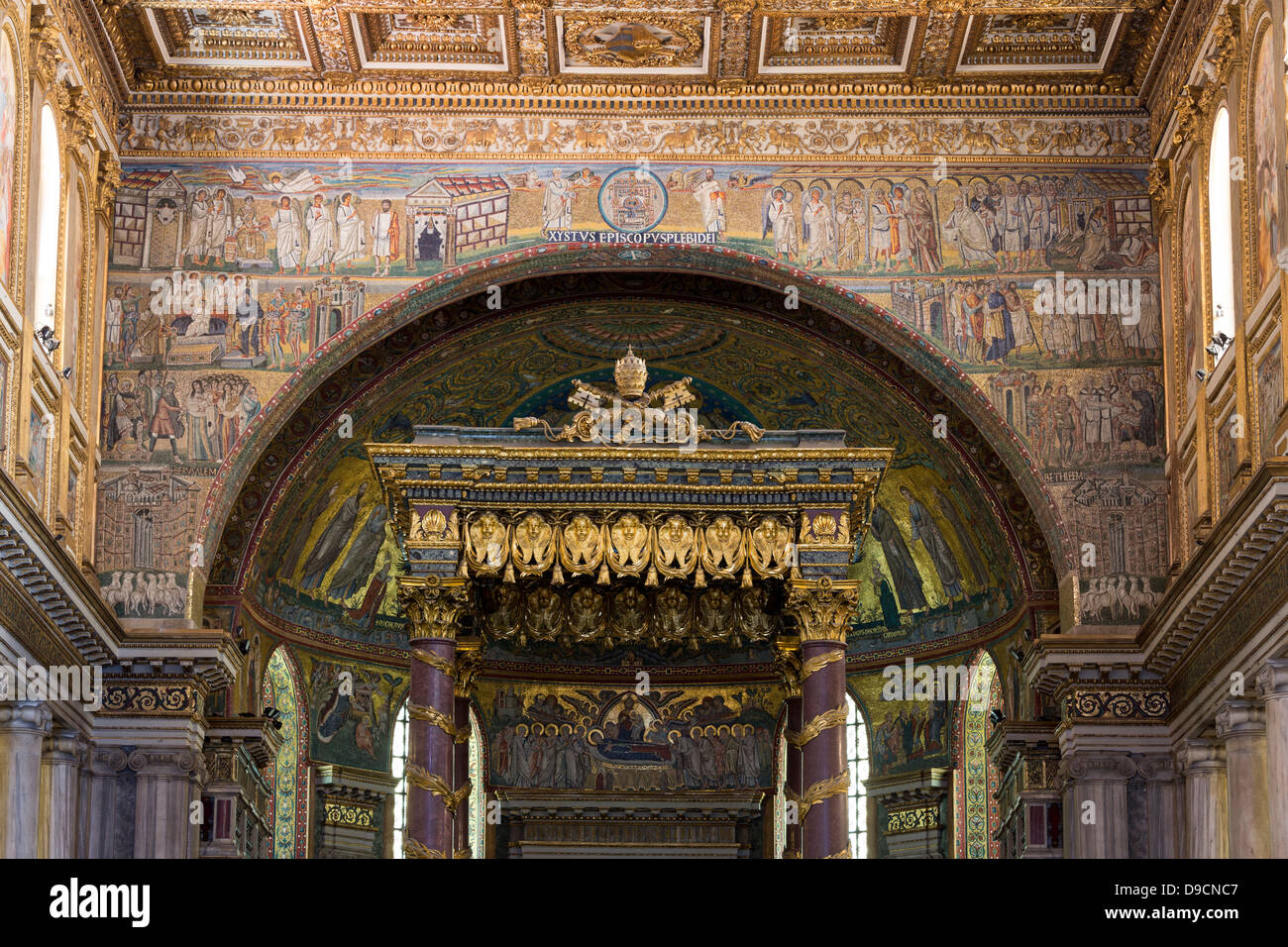5th century mosaics of Triumphal arch in Basilica di Santa Maria Maggiore, Rome, Italy

Image details
Contributor:
B.O'Kane / Alamy Stock PhotoImage ID:
D9CNC7File size:
63.3 MB (4.9 MB Compressed download)Releases:
Model - no | Property - noDo I need a release?Dimensions:
5759 x 3840 px | 48.8 x 32.5 cm | 19.2 x 12.8 inches | 300dpiDate taken:
12 June 2013Location:
Basilica di Santa Maria Maggiore, Rome, ItalyMore information:
The Basilica di Santa Maria Maggiore (English: Basilica of Saint Mary Major, Latin: Basilica Sanctae Mariae Maioris), or church of Santa Maria Maggiore, is the largest Catholic Marian church in Rome, Italy.Triumphal arch The mosaics found in Santa Maria Maggiore are not just incredibly beautiful works of Late Antique art; they are also one of the oldest representations of the Virgin Mary in Christian Late Antiquity. As one scholar puts it, “This is well demonstrated by the decoration of Santa Maria Maggiore in Rome, ... where the iconographic depiction of the Virgin Mary was chosen at least in part to celebrate the affirmation of Mary as Theotokos (bearer of God) by the third ecumenical Council of Ephesus in 431 CE.” The mosaics of the triumphal arch and the nave in Santa Maria Maggiore were the definition of impressionistic art during the time period and gave a model for the future representations of the Virgin Mary. The influences of these mosaics are rooted in late antique impressionism that could be seen in frescoes, manuscript paintings and many pavement mosaics across villas in Africa, Syria and Sicily during the 5th century. Mosaics in the triumphal arch The triumphal arch at the head of the nave was at first referred to as the apse arch, but later became known as the triumphal arch. The triumphal arch is illustrated with magnificent mosaics depicting different scenes of Christ and the Virgin Mary. There was a difference in the styles used in the triumphal arch mosaics compared to those of the nave; the style of the triumphal arch was much more linear and flat as one scholar describes it, not nearly as much action, emotion and movement in them as there were in the Old Testament mosaics of the nave. One of the first scenes that were visible on the triumphal arch was a panel of Christ’s enthronement with a group of angels as his court.